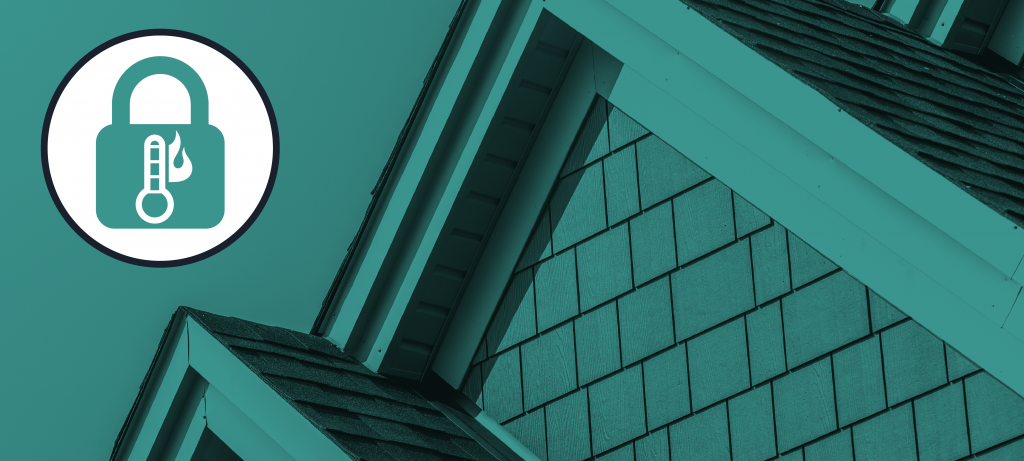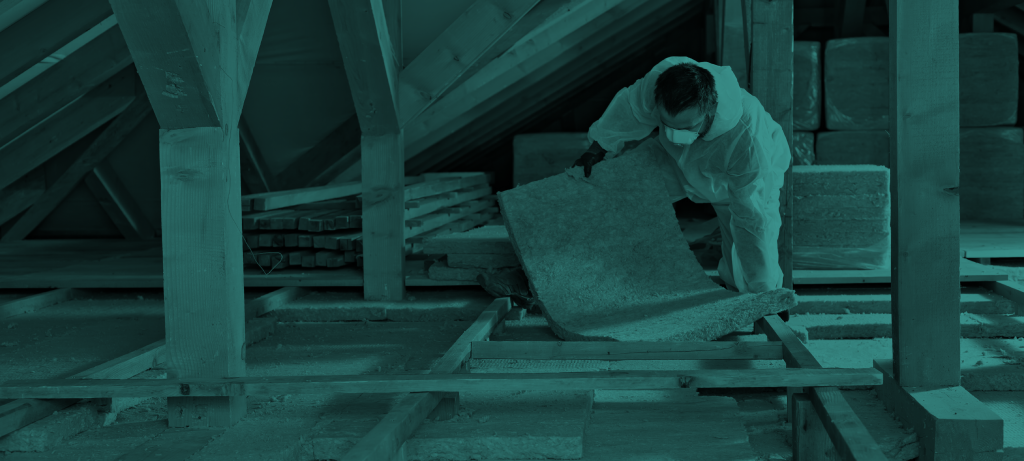The Loft Insulation Guide
Keeping your home warm in winter is one of the biggest challenges, and with energy costs currently on the rise, the need to be more energy-efficient is only going to become more pressing.
An uninsulated or poorly insulated loft space can be one of the biggest drains on your heating. According to the Energy Saving Trust, almost a quarter of the heat in your home is lost through the roof. So, to help you better understand loft insulation, we’ve put together a comprehensive guide.
As a leading loft storage room conversion company for the UK, we help homeowners improve their loft, increasing the performance of insulation while also creating a practical space. We hope that this guide will provide you with enough information to steer you towards a more thermally-efficient roof space.
In this piece, you’ll find information and answers on the following:
- What is loft insulation?
- How does loft insulation work?
- Loft insulation materials
- How thick should loft insulation be?
- Loft insulation dos and don’ts
- Loft insulation regulations
- How to insulate a loft
- DIY vs professional loft insulation

What is loft insulation?
In simple terms, loft insulation is a layer of material in your loft that can help to block heat from leaving your home. You can think of it as a large blanket spread across the floor of your loft space to better retain the heat in the rooms below.
This is the most common benefit of loft insulation, but there are also certain forms of insulation that can help to keep your home cool in the heat of summer, too.
The benefits of quality loft insulation installed to a professional standard are numerous, but here are the three most important:
- It lowers your heating bills
- It improves the energy-efficiency rating of your home
- It makes your home more valuable
How does loft insulation work?
We’ve already described loft insulation as a blanket placed across the floor of your loft, but let’s go a little deeper and look at the science behind loft insulation.
You probably already know that heat rises, which means any heating you have on, be it from radiators or fireplaces, will be trying to escape your property through the ceiling and into the loft space above. This is a process called heat transfer and it happens predominantly through conduction, meaning the usual materials your home is made from will easily conduct heat, passing it upwards and transferring it away.
Loft insulation is made of material that slows this heat transfer because it isn’t a good conductor. As you can imagine, it’s designed this way on purpose, giving it its insulative properties. It’s commonly a fibre-based material, but can also be a foil-backed material to add another layer that prevents heat from rising into your loft and out of your home.
Loft insulation materials
The variety of loft insulation materials out there is wide and includes things like:
- Insulation boards
- Insulation slabs
- Blanket insulation
- Spray foam insulation
- Loose-fill insulation
It’s all about getting what’s right for your specific home though, since properties can be designed and built differently, and different materials offer varying levels of performance. Here are the two common types of insulation we use here at Loft Storage Rooms:
Mineral Wool loft insulation – One of the best loft insulation materials, stone wool was inspired by volcanic eruptions in which molten lava would be whipped into fluffy strands by strong winds. This has been replicated to provide a material that is thermally resistant and can therefore retain heat within a property.
Foil loft insulation – Whether it’s used as rafter lining or in combination with your stone wool insulation, adding foil is a great way to reflect radiative heat back down into your property. This further reduces the amount of heating required in colder months.

How thick should loft insulation be?
The recommended thickness for loft insulation is often 270mm*, but again, this can vary depending on the material you’re using due to performance levels.
Both mineral wool and glass wool should be installed to a depth of 270mm, while mineral wool can be installed to 250mm and cellulose can be installed to 220mm. However, even with those lower depths, it is still recommended you reach 270mm, usually through a combination of materials to achieve the right thickness of loft insulation.
*The maximum depth in older properties is sometimes reduced to 200mm to allow adequate airflow and ventilation into the loft space from the soffit regions to stop any potential condensation build up.

Loft insulation dos and don’ts
For many people, loft insulation can seem simple until it comes to the crunch, so here are some dos and don’ts to help you get the best for your property:
- DO your research to find a trusted loft insulation professional
- DO check building regulations so you know what type of insulation you need
- DO regularly check your insulation to ensure it is in good condition
- DO check for any relevant grants you may be able to claim to improve the thermal efficiency of your home
- DO consider adding raised loft flooring to retain the efficiency of the insulation
- DON’T scrimp when it comes to the recommended depth — it’s there for a reason
- DON’T try and install insulation yourself unless you’ve got the professional experience
- DON’T use any materials other than recommended insulation
- DON’T place insulation over cables as this could be a fire hazard
- DON’T place anything heavy on the insulation
As you can probably tell, energy efficiency, a comfortable home and lower heating bills are worth getting the experts in for when it comes to this topic.
Loft insulation regulations
We’ve mentioned regulations in passing so far, but there is one very important regulation that your loft insulation must meet in terms of building regulations, and it’s about the U-value rating.
A U-value is a measure of how much heat is lost through a material. Therefore, you obviously want as low a value as possible, but there is a maximum value you should be sticking below. 0.16W/m2K (Watts per metre squared per Kelvin). This was set out in Approved Document L of the Building Regulations in June 2022, so is something of a recent figure to be aware of.
How to insulate a loft
Insulating a loft is not simply a case of throwing down any old materials. Here at Loft Storage Rooms, we take the time to do it right and pay close attention to details to ensure you get the best performance from your loft insulation. Here is an overview of how we insulate a loft:
Planning and preparing
- We measure the loft space for an accurate idea of how much insulation is needed
- We inspect the depth and quality of any existing insulation
- We remove any items from the loft space
- We ensure safety measures are taken such as turning off mains where appropriate
Carrying out the work
- We ensure we wear appropriate safety gear, including face masks and goggles
- We move carefully in your loft space to avoid any damage
- We cut insulation into the right size and shape to fit snuggly between joists
- We ensure there are gaps in the insulation where it meets any heated chimney or flue
- We ensure insulation is not fitted over cabling, lifting cables or clipping them into a different position
- We then place any storage room flooring over the insulation with a gap to avoid squashing and compacting the material
Aftercare
- We check that nothing weighty is placed on your insulation
- We clear away any waste and debris for an immaculate finish

DIY vs professional loft insulation services
As with any home improvement project, some people want to do it themselves. This is absolutely fine, especially if you’ve got experience of such work and are up to date with the latest regulations. However, for many people it’s a false economy, since the money you might think you’re saving by going it alone is actually either lost due to poorly installed insulation or you end up paying to have your own work rectified later on.
Here are seven reasons to use a professional insulation installer for your loft:
- You save money long term, both on bills and replacement or repairs later
- The experts know the right materials to use for your property
- They also know all the regulations, including the right U-value and depth to achieve
- Your home will be more comfortable if you know it’s been insulated to the highest standards
- If you have any pipes, cables, water tank or awkward spots, a professional will know how to safely work around them
- It saves you time, a precious resource that you can devote to something more important while your loft is swiftly insulated by the experts
- It’s safer – experts know where the hazards are and how to safely move within your loft space
Here at Loft Storage Rooms, we help you make more of your loft space with the bonus of making it more thermally efficient to help you with rising energy bills. Saving you from asking “how much loft insulation do I need?”, we take care of all the details like insulation, lighting, storage and more.
Call our professional team today to find out more about transforming your loft space with improved insulation. We cover Cambridge, Harlow and London, as well as a large portion of the UK.
